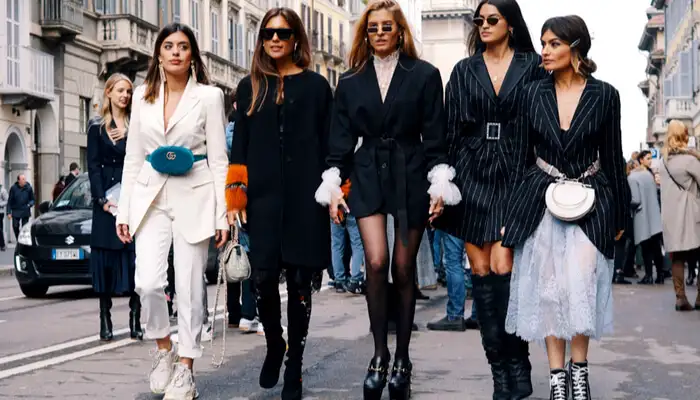According to a GQ interview with Vivienne Westwood in the September 2021 edition, Westwood believes that Couture is sustainable fashion. In her interview with GQ magazine, Westwood stated that Couture is the only sustainable fashion.
The problem is “the high street” Mass production is all about cheap labor and death. Couture is the only fashion that’s sustainable – you can’t go more sustainable than couture. Buy less, choose wisely, and make it last. “That’s what is best for the environment at the moment.”
Westwood’s bold claim is it true? This article will examine if Couture is really the only sustainable fashion, and what high-street retailers can do to counter this issue.
What is sustainable fashion?

A garment that contributes to the maintenance of an ecological system is sustainable. Sustainable means that the product’s sourcing, manufacturing and supply are environmentally friendly, and do not cause an imbalance in the eco-system chain. Fabrics used to create the product should be safe for humans, animals, and the environment. When determining sustainability, the end-product is reused to ensure that resources are not wasted. The lifespan and durability should be greater for sustainable fabrics than other fabrics. These fabrics can include hemp, bamboo Tencell, Lyocell Wool, organic cotton, and more.
For what reason is sustainable design creation significant
Those who have been following the news will be aware that natural disasters such as wildfires and hurricanes are occurring more frequently around the globe. Climate change is at the root of this, and is truly the greatest existential crisis in our time. In my blog post “The Impact of Fast Fashion”, I mention that the fashion industry contributes the most to global warming. According to the (UNECE,2018) 85% all textiles are disposed of in landfills or incinerated. Clothing brands who adopt a sustainable fashion approach aim to reduce this statistic by either reselling used clothes, upcycling clothing or developing higher quality and durable clothing.
In the 1960s the average person spent less than $25 a year on clothing, but 10% of the household budget. In stark contrast, consumers of today buy an average of 75 items per person each year and spend approximately 3.5% on their annual budget. This is often paid by the environment.
What does Couture fashion mean and is it sustainable?

How can you make Couture fashion more sustainable now that we know what sustainable fashion is? The French word “Couture” means dressmaking. The term encompasses all pieces that are made from scratch using high-quality, expensive and unique fabrics. When it comes to traditional couture, some might argue that its only eco-friendly feature is that it’s made to order. This means that only the resources needed/wanted are used. Clothing brands who mass-produce products to meet new fashion trends are the opposite.
Fabrics such as linen and wool are often used by couture designers. Each piece should be timeless, durable and able to be passed down from generation to generation. Couture is slow fashion in its purest form.
How is Couture Fashion not Sustainable?
Even though Couture is a slow fashion, it still has its pitfalls. Couture fashion designers, for example, create one-off unique pieces they consider pieces of art. Some outfits make a statement by being ”out of the box”. Most Couture outfits will only be worn once by the owner. The production of Couture is a major contributor to excess clothing, which has a negative impact on the environment.
Couture Houses have a customer base that is approximately 4,000 times larger than fast fashion brands. Couture is a small part of the fashion industry. One might think that it is almost pointless to concentrate on sustainability in a niche industry, as it will not have a large impact.
Why are high street retail brands not durable?
The ”ready to wear” fashion category includes high street fashion. The focus is on producing garments that are in line with the latest market trends. High street brands are retailers who produce clothing for the masses, and therefore make up a large portion of the fashion sector. High street and online retailers produce a large number of new products every week, unlike couture brands. In the UK, this leads to the disposal of 300,000 tons of clothing each year. This increases the amount green house gasses emitted in the atmosphere. Zara and H&M, two of the most popular retailers in the world, have committed to creating collections made entirely from sustainable clothing. This sounds great at first, but in reality it will have less of an effect if the retailers are willing to alter their production numbers. This is unfortunately the primary reason why high street retail brands cannot be sustained.
Can high street retail brands survive?

It is up to the brands themselves whether they want to become more sustainable. Fashion is a business, and more customers equals more revenue. Online stories about fast fashion, such as Boohoo or Pretty Little Thing, show how profitable the industry can be. More and more clothing retailers, however, are making a concerted attempt to become more fashion-conscious. This includes being transparent about the manufacture and supply chain, and incorporating sustainable fabric into their clothing collection. Martin Newman, retail and consumer expert, recommends: “High street fashion stores should find manufacturers that are focused on sustainability in the entire supply chain, use only recycled packaging and work with couriers using or who will use electric bikes and vehicles and, of course try to source locally to minimize the carbon footprint.” Fast fashion is still prevalent on the high street despite these suggestions. If this issue is to be addressed, high street retailers as well as the government need to take more action.
Can only the wealthy afford to wear sustainable fashion?
Is sustainable fashion possible only for wealthy consumers if Couture fashion targets a more affluent market? Fast fashion is more affordable and accessible for consumers with lower incomes who want to look on trend at a cheaper price. Nearly 14 million people live below the poverty level in the UK, so it is unlikely that everyone will invest in eco-fashion. If you take a step back and look at the market, it’s clear who is driving fast fashion. In almost all countries, the poorer communities outnumber the wealthier ones. If the global fashion market is to tackle the issues of sustainability and environmental destruction, it must address this imbalance.
Vivienne Westwood has a point when she says that Couture fashion is the only sustainable style, but it is only true to a certain extent. Couture fashion is not for the masses due to its nature. High street retailers could become more environmentally friendly by incorporating certain aspects of the Couture business model. For example, they would produce fewer items of clothing. This is something that we hope happens sooner than later.

